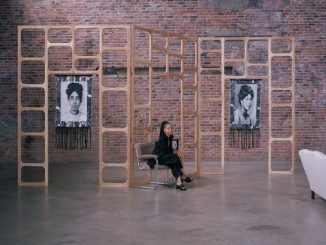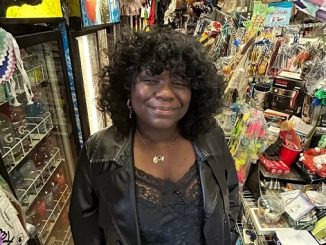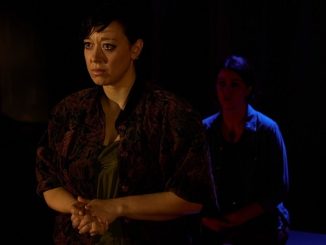Gallery Weekend, in only its’ third year in Montreal, comes around to embark on an important political and artistic journey. Joining multiple stages of things like contemporary and fine art, and the separated high-class culture of life and the world, it promotes equality and repurposes art. Focusing on one exhibition, by Monica Bonvinci, lets us look at things that were once private she turned into public knowledges and feelings. Having helped build a gallery she was then featured at 20 years later, she creates the relationship between person and place through building and space. Using construction rocks as her exhibition, its’ a relationship of ground and construction, interaction and personal reflection, through a social reflection and social idealisation that is to exist in the art and people.

In terms of social thought, Bonvinicis’ work and self involvement perpetrates through a criticism without having to criticise, attend, or be there. This exists as a passive relationship, because regardless if anybody attends, the relationship between person and place is made. In one way, it reflects how art exists for people, especially to see it and be critical about it. In another, the way people passively regard it mean that the art really just depends on the citizens to exist as people, and for artists to do what they can to make changes for them, and still even through them. Visiting makes an impact on the relationship between the institution, and its’ political or economic and cultural activity by showing what society is not just interested in, but invested in. Monica puts down closed doors rather than an open invitation that, through open construction, revels over the whole idea of an academic or cultural based societal institution.
“I Do You” By Monica Bonvicini, Photo By: Stefan Altenburger
Materializations are represented in art in inevitable ways. In the cultivation of artistic methods, different aspects of naturalism are created. These different phenomena build who we are, and the method of our nature is not impacted by it, but influenced by it. By using construction rocks, these rocks aren’t representing manmade construction in its’ glory, but its’ over glorified representation and use, like it’s higher classed power over people. It poses the necessity to resee the rebuilt life. Envisioning what is imagined through art reconstructs our vision and helps see that the post-industrialistic life can only be seen with what is an ecological perspective. Discussing what we are studying architecture through, and how we have failed, views it through an “ecotopia”, which is defined as an ideal nature between the earth and people. Why this exists intrinsically in institutions is that any academic or study, or use made by humans, is that it has come from our art.
This exhibition goes beyond her own institutional relationship to it to further defining that of Gallery Weekends’. It helps defining something of a geological phenomenon in human “topia”, or learning, in its’ constant use of the earth. She uses this construction as a disclosure of its’ own establishment. Simplistic in material but complexed, it becomes a powerful topic of discussion in itself. The fact of being displayed temporarily shows its’ artifactual integrity, that’s in one sense almost her own way of being able to forgive and forget while making her time and efforts there renown. Regardless of it being well-known, her fame was used not to regard herself in a spotlight, but almost in resignation. The methods in art that came before this construction is failing, and what became of it succeeded not even in a pursuit of something that could be happy, but something that succeeded because it had to. What it expresses about the relationship of some sort of artistic or cultural geological ‘topia’ is of the geological phenomenon in human culture, like art and architecture, that is heavily controlled by institutional use for institutional purposes, and not even necessarily academic ones. Beyond being academically ironic, to be an artistic in a architectural standing and use it in forfeit of itself, and herself, it shows that unless it (art, or architecture) focuses on its own integral capacity, is not something that is capable of being something earth bound. She had to consider her own position, and give us the reasons that art defies things in humanity that things like linguistics or other academics can’t. It’s the most rational and logical thing to do as an artist, and made her really stand up and pursue an activism that is sharply cynical.
Gallery Weekend helps incorporate the ideas between people and art in a less institutional way, even though it has to continue to work through the system of the it. In the layers of the world that stand between people and society, Gallery Weekend looks to impact aspects of both culture and economy through the different uses and impacts of art. Through things like materialism of art, the various industries in culture, we recreate the materialisation of life and of human culture. These cultural ideas are input through different cultural methods, and through discipline, things like art, architecture, and other aspects, like linguistics, poetics, or psychology are utilized. In whatever kind of ‘integrity’ builds these aspects of humanity, humanitarianism, and human life, what industry it occurs through continues to make global industrialization. By refuting the materialisation of culture, we create a better ecology of cultural methods. This is Gallery Weekends’ cultural input. Creating these ideas, it even too speaks against some of its’ own way that it has to use art, or influence people through propogated academics. It’s more or less clean break from the world to see art using every aspect of modern culture it can, and to see the naturalistic integration in the world that wants to still exist. As a dying art of the world, these things like cultural architecture, in a dying world, is trying ever so hard to bring it together, however it can, with why it can.
***
Monica Bonvicini: I do You – Tickets




